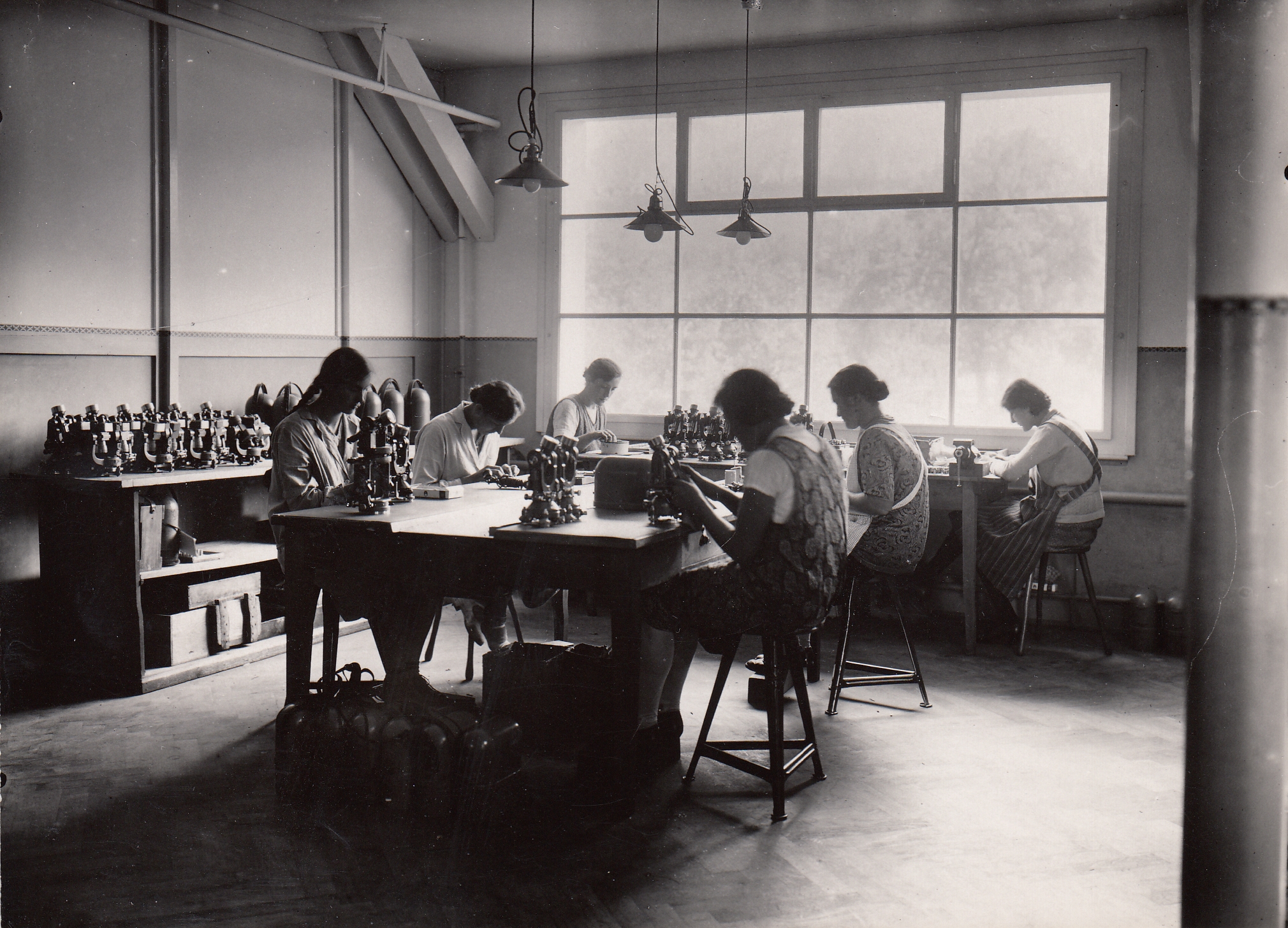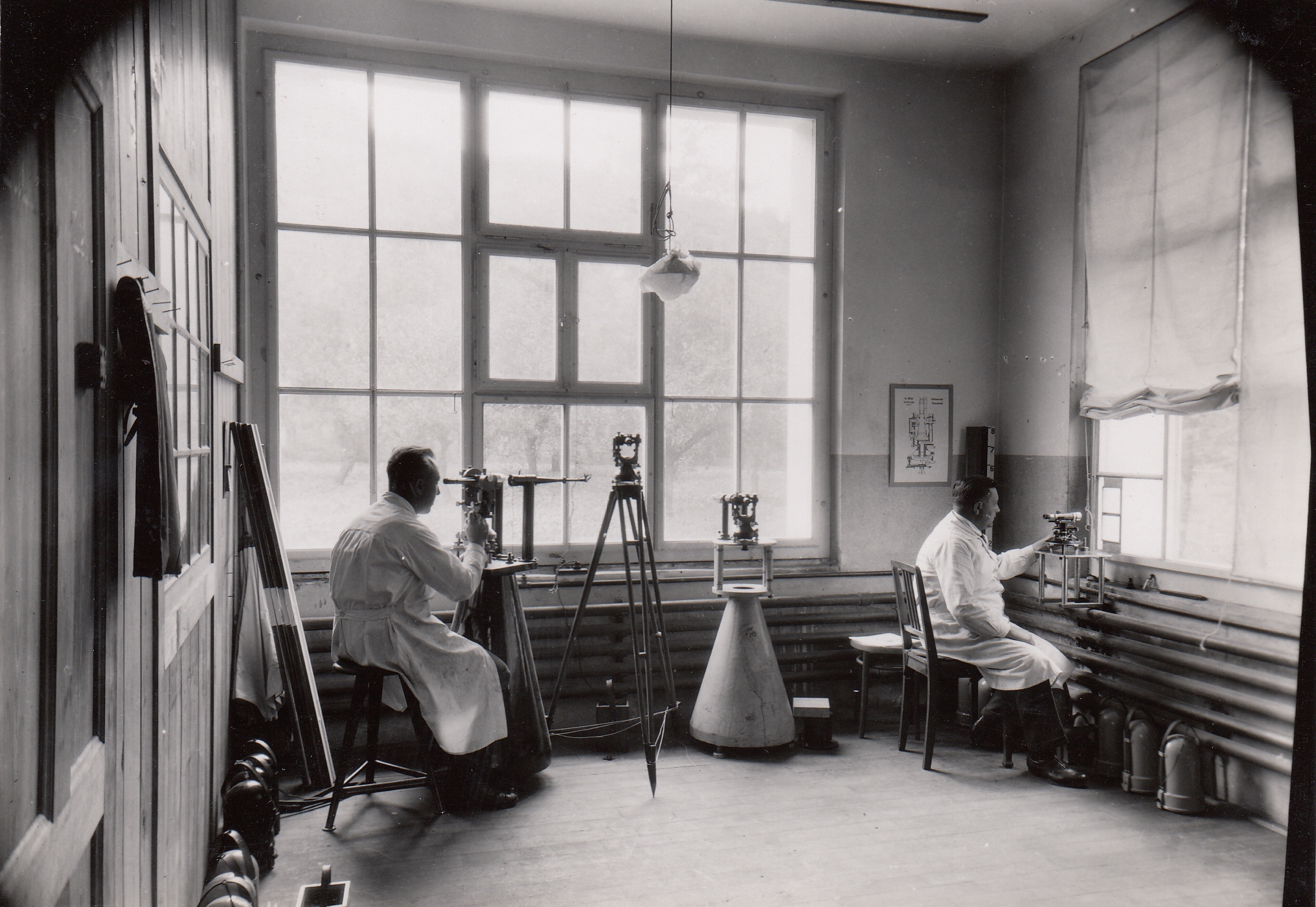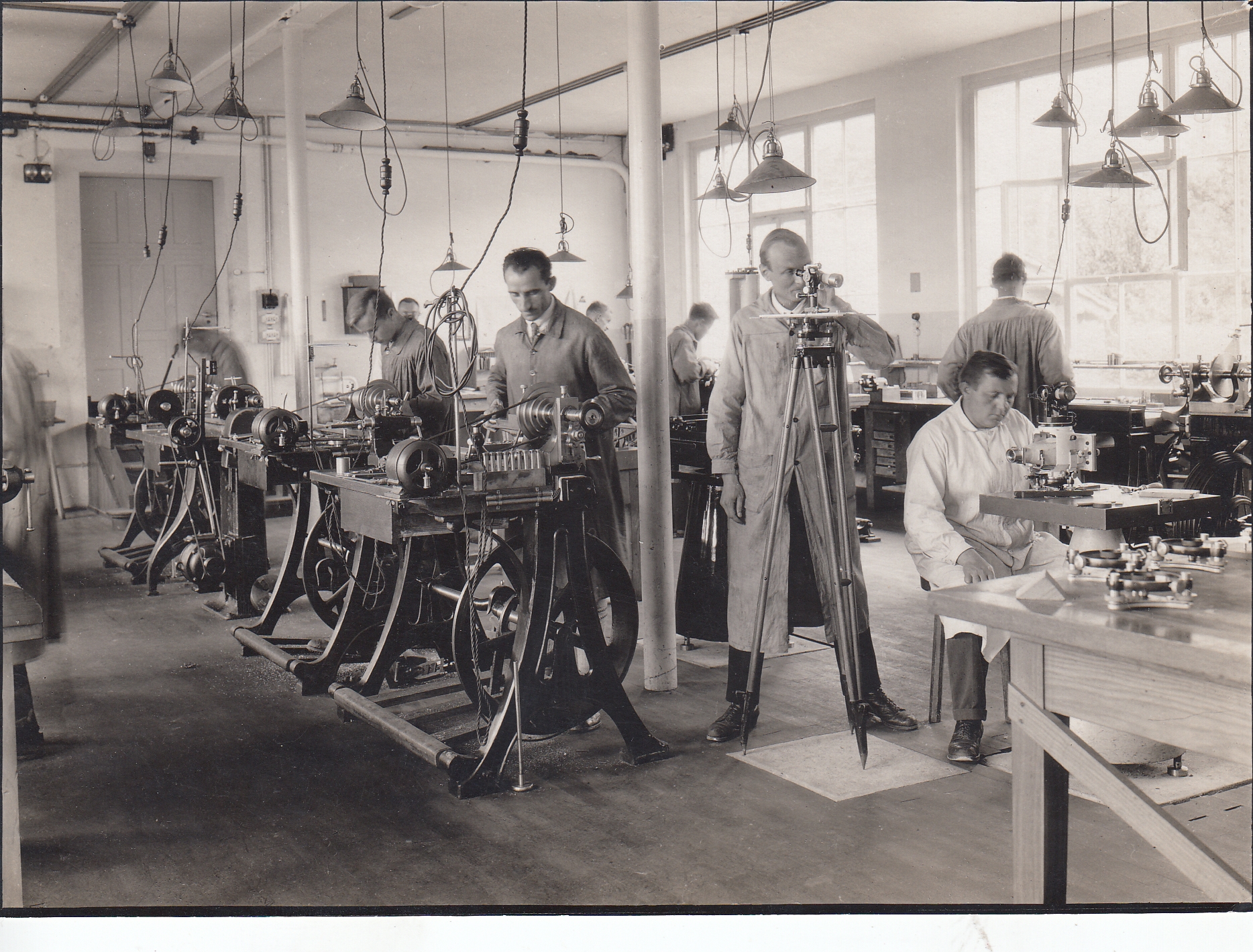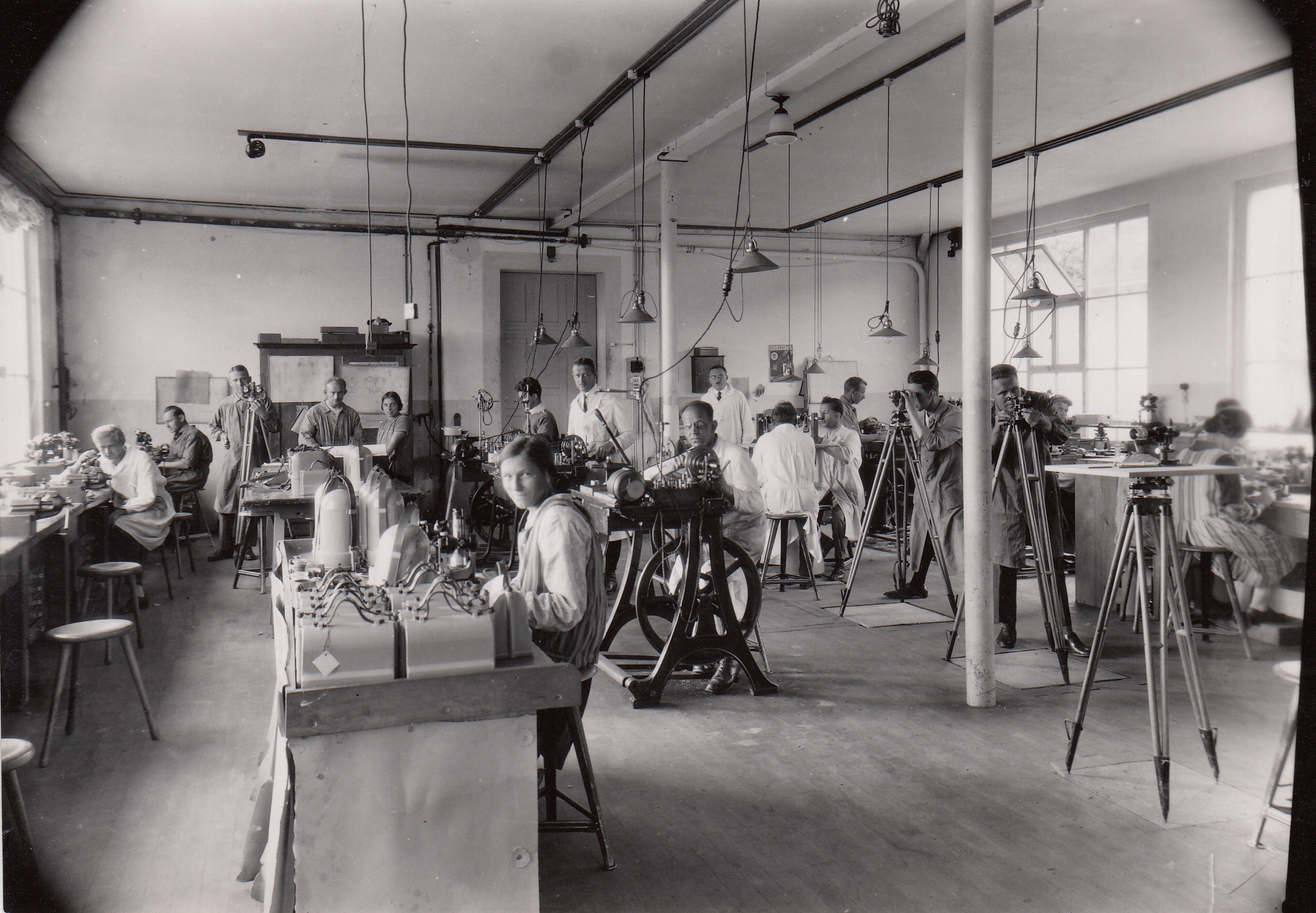This theodolite, called the WILD T2 universal theodolite, was purchased by ETH in 1923. This was also the year in which the Geodetic Institute was officially mentioned for the first time; this happened during the summer semester. However, geodesy and topography had already been taught since the Polytechnic was founded in 1855.
As well as originating from the time when the Geodetic Institute at the ETH was founded, the theodolite also dates from the founding period of the manufacturing company. 1921 saw the founding of sole proprietorship Heinrich Wild. Workshop for precision mechanics and optics, Heerbrugg by Heinrich Wild, Robert Helbling and Jacob Schmidheiny.
These pictures dating from the 1920s and early 1930s show the Wild Heerbrugg workshop.1
Heinrich Wild provided the ideas during the company’s founding period. However, qualified staff and sufficient capital to implement them were lacking. The first instruments of Heinrich Wild’s company were built as prototypes, many developed by Wild himself, including the T2 universal theodolite. This theodolite, which came onto the market around 1924, garnered the company its first success. What set the T2 apart was the fact that it was much smaller and more compact than the triangulation theodolites of earlier designs, but nevertheless more accurate and faster. It was the world’s first truly portable theodolite and was to revolutionise surveying in the years to follow.
However, the development of the T2 proved to be much more costly than expected and the company’s start-up capital was quickly absorbed. This led to the 1923 founding of a sales joint-stock company trading as Heinrich Wild’s Geodetic Instruments. T2 theodolite production of 350 units was planned for 1924, but only 27 could be manufactured. Experienced precision mechanics and opticians were difficult to find in Switzerland. This led to the founding, in 1923, of Werkschule Heerbrugg — the company’s in-house vocational school.2
ETH managed to acquire one of these rare, first T2 theodolites directly from the Wild company as early as 1923. It bears the number 353. The price paid by ETH was 1600 francs, as stated in the Geodetic Institute’s inventory book.
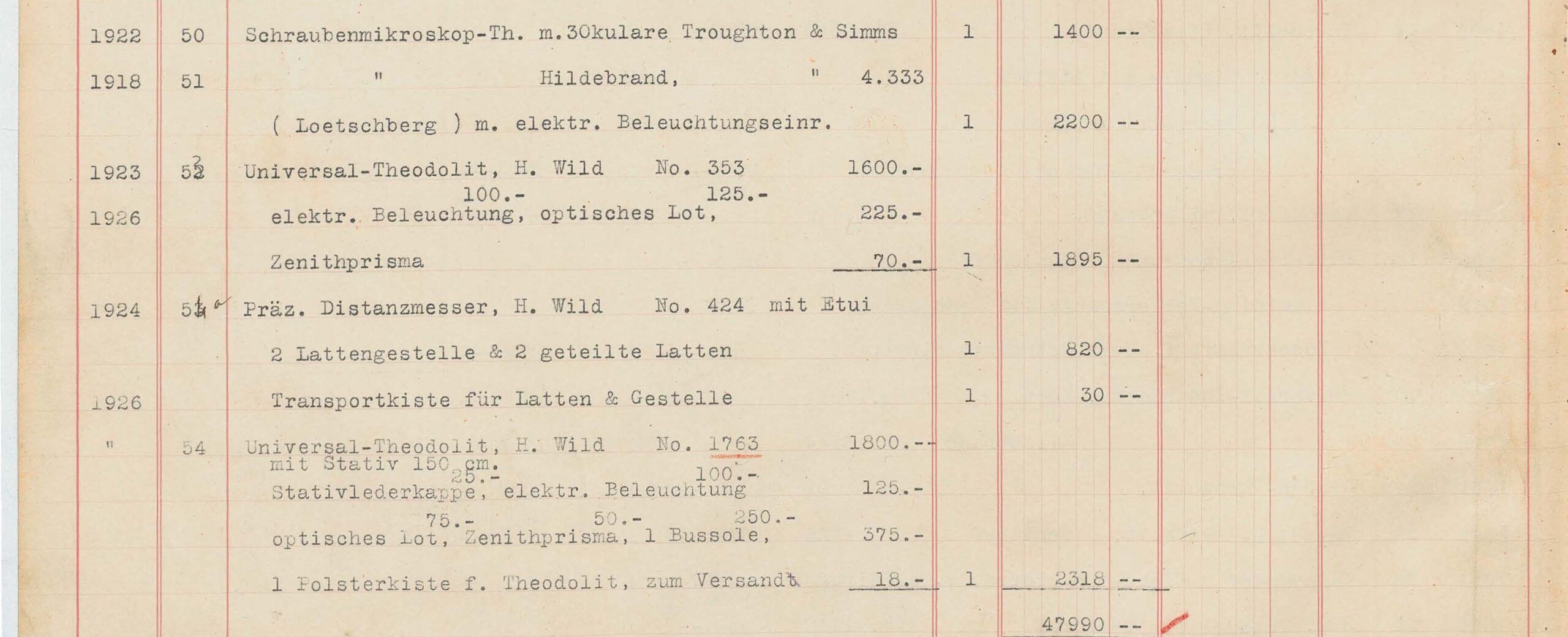
Carl Fridolin (Fritz) Baeschlin (1881-1961), an engineer from Glarus, Switzerland, was professor of geodesy and topography at the time. He was appointed to ETH as Max Rosenmund’s successor in 1909. Baeschlin had previously spent five years working as an engineer at the Swiss Federal Office of Topography, where he collaborated closely with Heinrich Wild. This was how he came to be the owner of Wild Heerbrugg’s rare instruments.
Production of the T2 continued until 1996. The collection of scientific instruments and teaching aids also comprises other T2 theodolites, such as this model from around 1929, or those produced later, such as a model from 1969 or a model from 1986.
3D Digitalisation
Object selection
This T2 was presented to us by a staff member as early on the first visit to the inventory in the Institute of Geodesy and Photogrammetry in a cellar on Hönggerberg. It was described as a very special instrument that should be preserved at all costs. A closer look at the history of the instrument and the company revealed that this T2 is a theodolite that not only marks the beginning of the history of the Wild Heerbrugg company, which was important for Switzerland, but also revolutionised surveying through its precision and compactness. Therefore, we decided to include the T2 in the collection, as well as to digitalise it as a 3D model. The field of surveying comprises a large community of collectors who are particularly interested in such early developments, as very few instruments are still physically preserved. 3D digitalisation allows them — at least digitally — to add the model to their collection for closer study and comparison with their own objects.
Photogrammetry and modelling
Due to its material composition, a matt metal painted green, it was possible to digitalise the T2 relatively well. As you can see, however, the glass of the level, for example, had to be modelled completely by hand. The compass and the mirrors as well as the animated structures were also created manually.
